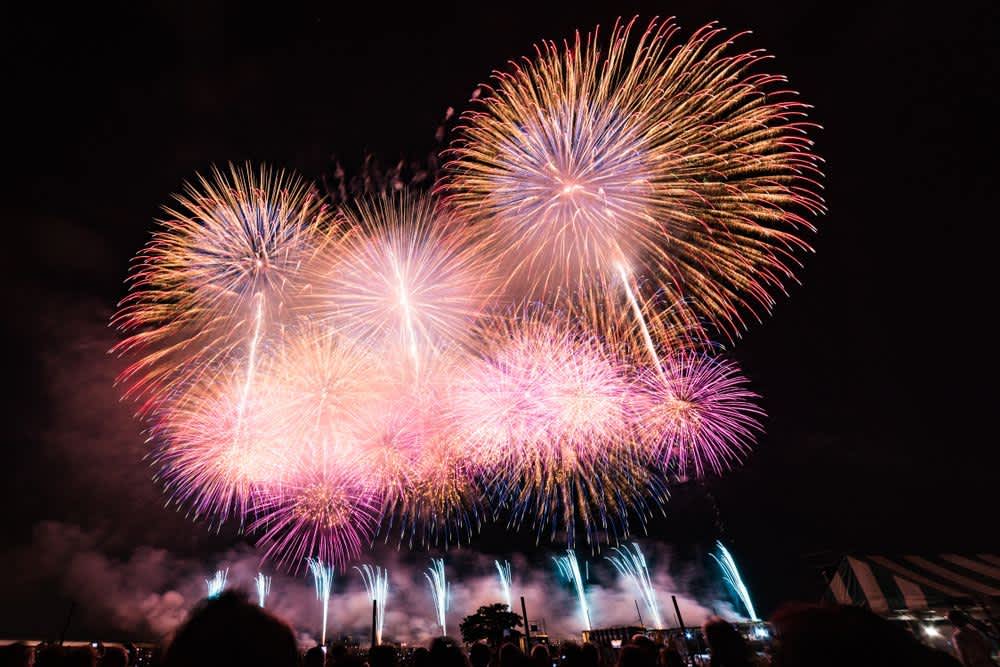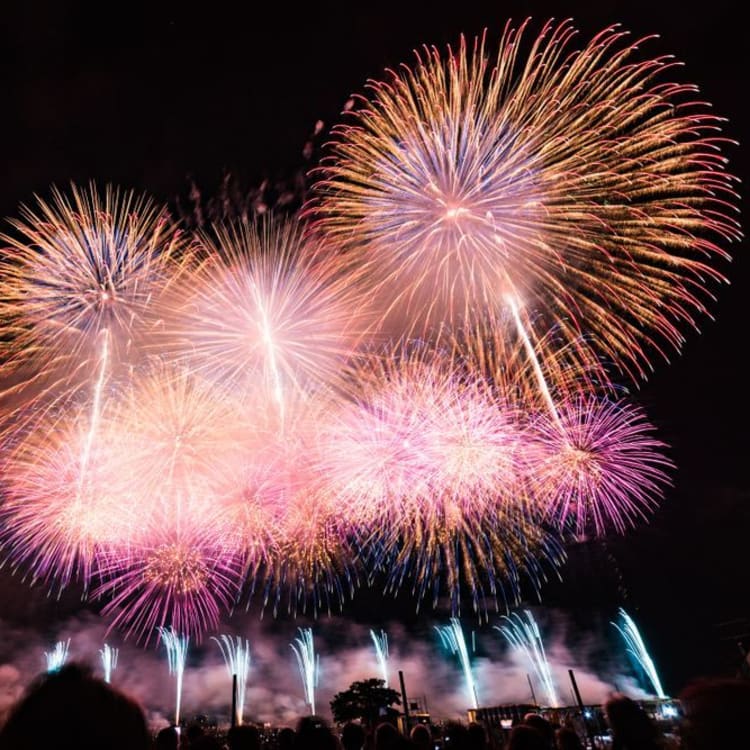
STORY 4 Fireworks Festivals You Must See! by JNTO on 01 July 2019
Originally used to scare away evil spirits, fireworks have a long history in Japan and have slowly become a quintessential part of Japanese summer culture. Singaporeans may be familiar with the fireworks at New Year. But have you ever been to a fireworks festival in Japan?Here, we will take a look at what Japanese fireworks festivals are like.
The Japanese take their fireworks very seriously!
Fireworks are called “hanabi” in Japanese, meaning “fire flowers”, and displays are usually on a grand scale. Some incorporate son et lumiere shows, while others are launched above famous historical sights. This long-standing, spectacular tradition is not only very popular with the locals but is also a major draw for tourists to visit Japan during the hanabi season every year.
The Big Bang
Japan’s pyrotechnics boasts the world’s biggest fireworks: the “Yonshakudama” sphere which measures up to 1.2 meters in diameter and weighs several hundred kilograms. The most famous ones are “star mines”, which are round firework shells that showcase various patterns when they burst, and “Niagara sparklers” named after Niagara Falls give off shapes resembling waterfalls.
The Charm of the Fireworks Festivals
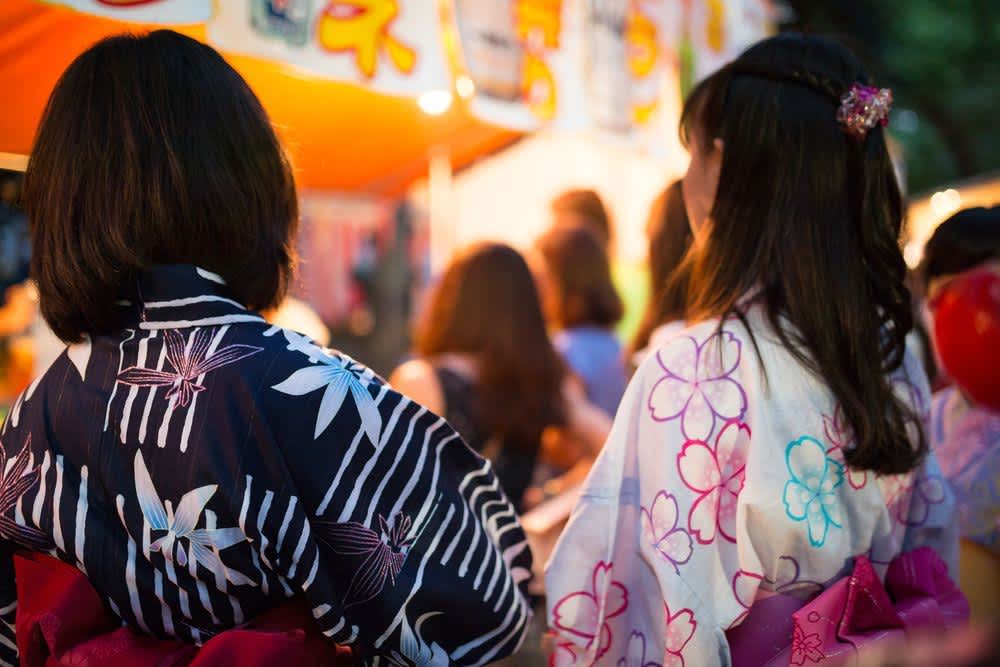
Japanese fireworks festivals are not just about people simply watching the sky light up. Its charm is also the lively festival atmosphere that is part and parcel of them. At the festivals, you will see people wearing beautiful yukata (lightweight, casual version of kimono) and you can find local street food and game stalls along the way.

These fireworks festivals generally last from 1 to 2 hours, but people often arrive hours in advance to make sure they secure a good viewing spot to spread a groundsheet and enjoy picnic with food and drinks as they wait for sunset. The displays usually end with grand climaxes with hundreds of fireworks are launched simultaneously.
If you are in Japan this summer (or planning for your next trip), you should try to see one. Here is a list of four hanabi festivals around Japan in 2019.
Omagari Fireworks Festival (Akita Prefecture)
Every summer, the top fireworks makers in Japan are invited to Omagari Fireworks Festival, considered one of three biggest in the country, to show off their craftsmanship and creativity for this breathtaking show and to compete for prizes for the best displays. This tradition has been running since 1910, and it is a national competition, you can imagine the crowds and the attention it attracts. More than 600,000 people come to Akita from all over Japan just to witness this spectacular show. There would probably be many more if the location were not so remote!
One of the most famous fixtures of this event is the continuous detonation of “star mines” over a distance of 500 meters: just imagine how exciting that must be!
Yet another special feature of Omagari Fireworks Festival is that it is the only fireworks show in Japan where you can watch a daytime display of fireworks!
Omagari Fireworks Festival
Address:Omono River; river bank downstream of Omagarihanabi Bridge, Omagari, Daisen, Akita
Access:30-minute walk from JR Akita Omagari Station
Operating hours:5:30 p.m. - 6:15 p.m. (daytime show), 6:50 p.m. - 9:30 p.m(night-time show)
Kumano Fireworks Festival (Mie Prefecture)

Kumano Fireworks Festival is a traditional display which has been held for the last 300 years. This giant fireworks show takes place in Kumano, a seaside town in southern Mie Prefecture. The performance features 10,000 fireworks detonated from boats and rocks in front of the natural grandstand of Shichiri Mihama Beach and the World Heritage Site of Onigajo. Here, you can witness the famous "kaijo jibaku” (fireworks on the sea) set off from boats which create a spectacular semicircle of reds, blues, and yellows in the sky, beautifully reflected in the water.
- Kumano Grand Fireworks Festival
- Address:Shichiri Mihama Kaigan, Kumano City, Mie Prefecture
- Access:5-minute walk from JR Kumanoshi Station
- Operating hours:7:00 p.m. - 9:30 p.m.
Fireworks × Laser × Music
Huis Ten Bosch (Nagasaki Prefecture)
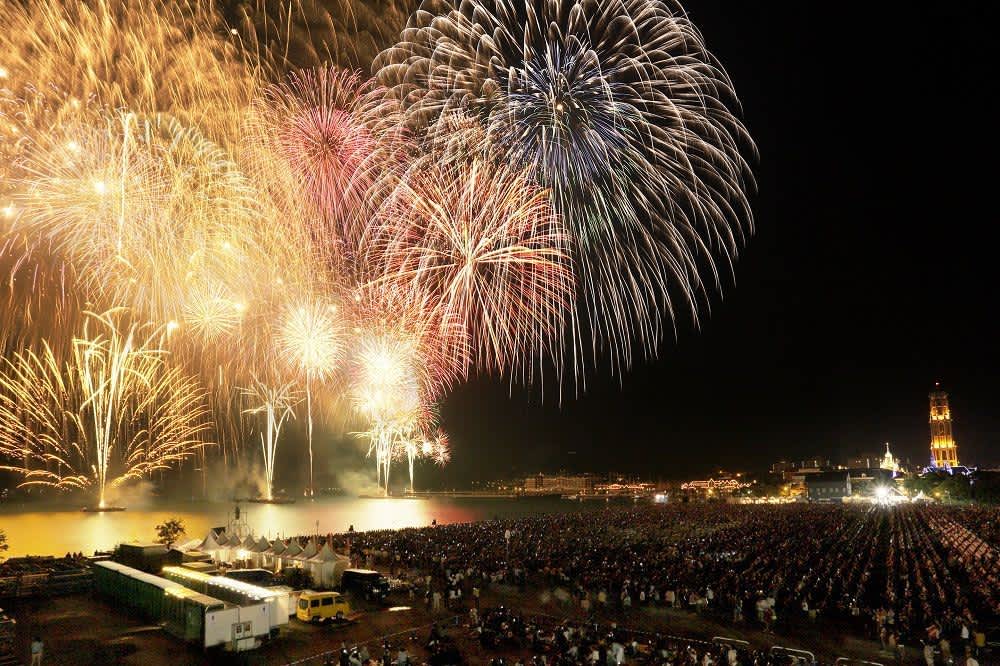
You have almost certainly watched the magical music fountain at Sentosa or Marina Bay Sands, but have you ever seen a combination of music, lasers, and fireworks?
In Kyushu, the most south-westerly of Japan’s main islands, the “Special Fireworks Festival” of Nagasaki’s theme park Huis Ten Bosch which recreates scenes and buildings of The Netherlands, are very popular.
This special fireworks performance is held just next to one of Japan’s most picturesque harbours. 13,000 fireworks will be launched into the night sky and synchronised beautifully with lasers and music. If you like music and spectacle, this is a show that you cannot miss!
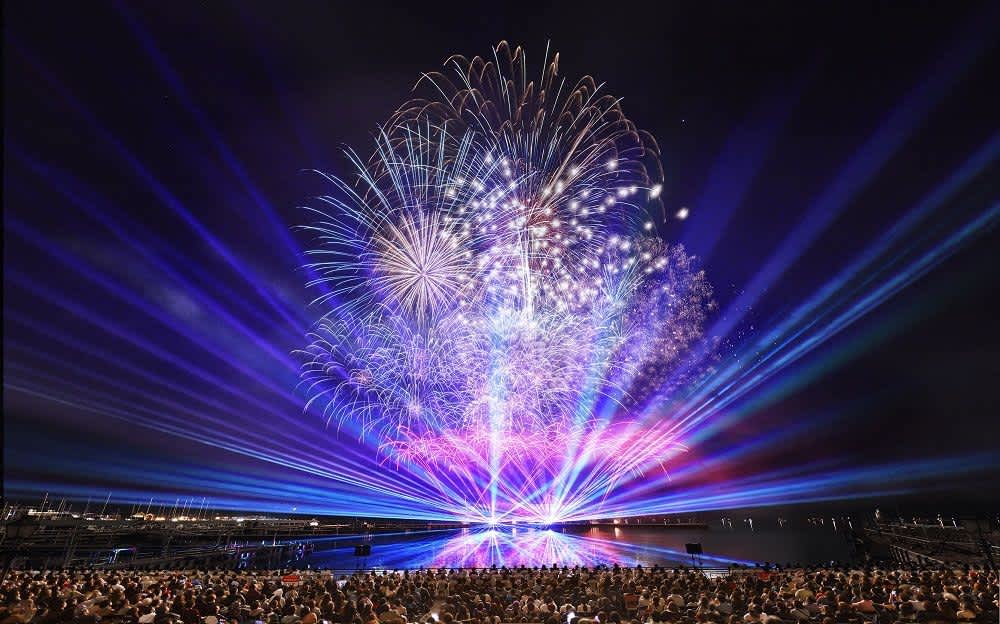
- Special Fireworks Festival
- Address:Huis Ten Bosch Town, 1-1Sasebo City, Nagasaki Prefecture
- Access:About 50 minutes by high-speed boat or bus from Nagasaki Airport, or
- 1 hour and 45 minutes from Hakata Station by limited express
- Display time:8:00 p.m. - 9:00 p.m. on 13 July, 10 August
©ハウステンボス/J-19085
Nagaoka Festival (Niigata Prefecture)
This festival is another of the three major fireworks in Japan and, as such, extremely popular. About 1 million people visited over the two days last year. The highlight of the event is “Phoenix,” a display accompanied by the well-known Japanese song “Jupiter”, intended to lift spirits after a deadly earthquake in 2004.
The festival itself is a three-day affair that starts on 1 August with parades of “mikoshi” (portable shrines), traditional folk-dance processions, and floating lanterns, while the fireworks are on 2 and 3 August.
The festival also features famous “Shosanshakudama” which are spheres of 90 centimetres in diameter and weight of 300kilograms. Said to have originated as a prayer for peace, they explode 600 metres up in the air into a huge fiery flower of 650 metres in diameter. “Phoenix” itself requires a 2 kilometre-wide launch site, while the “Kome Happyo” display comprises 100 successive launches of “Shakudamas”,which reach 300metres up in the air and expand to 300 metres in diameter.
